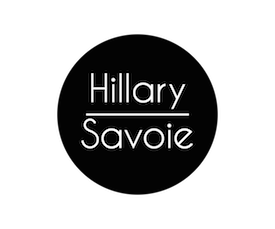One night in the fall of 2011, after my daughter Esmé was tucked into her crib, I climbed into bed, grabbed my laptop, and opened YouTube. I took a deep breath before I started searching terms like infant tremor, infant shaking, and then finally, in what seemed like a betrayal of my daughter and my own carefully honed optimism, I typed the words: infant seizure.
That night I watched video after video of babies having seizures. I watched so many that my husband begged me to stop. But I still watched, carefully analyzing each movement and reading the video descriptions and comments hoping to see the words: “We thought it was a seizure but it wasn’t!”
I didn’t find that.
What I found, instead, was justification of my fear that my daughter was having seizures.
We are in the last day of November, the last day of Epilepsy Awareness Month. Every November I do my part to raise awareness—sharing memes about what to do if you see someone having a seizure (don’t put anything in their mouth!) and figures about how many among us will be diagnosed with epilepsy in our lives (1 in 26!) or experience a seizure (1 in 10!). These are important messages to share, but I often feel that there is something missing—the explanation that epilepsy isn’t just about the seizures.
I tend to feel it the most as the month draws to a close. I want to explain that epilepsy awareness isn’t about a month. It isn’t about wearing purple. It isn’t always even about the seizures.
For us, epilepsy is also about the shadows cast by the seizures.
The first time I know my daughter had a seizure she was eight months old. Esmé was asleep next to us. My husband and I both turned to her in time to see the tremors in her tiny plump hands and feet subsiding, a blue-ish tinge just leaving her face. It was so fast—fast enough that I questioned if it actually happened.
But, deep down I knew. And that is how I found myself scouring YouTube that night.
Esmé had been unwell since birth. We had spent weeks in the hospital after severe aspiration pneumonia almost took her life. We were not unfamiliar with the world of terrifying medical things that can happen to a baby. We already had a neurologist, who we called the next morning. He assured us that it was very unlikely to be a seizure, but ordered a 30 minute electroencephalogram (EEG), to check her brain function “just to be sure.”
Several days later the doctor told us that the EEG was normal. He confidently stated that Esmé was not having seizures. This was supposed to be good news, but it didn’t feel that way. Esmé was still having these trembling spells, several of which I’d recorded on my phone. I showed the videos to him and asked him to please tell me what they were. He watched the videos of Esmé trembling, turning blue, her eyes rolling up and to the left, and pronounced it to be neurological reflux. He sent us on our way with instructions for Esmé’s gastroenterologist to get her reflux under control.
It wasn’t reflux, but it took almost a year, three hospitals, many new doctors, weeks of inpatient EEGs, five emergency room visits, and two 911 calls to confirm beyond a doubt that our daughter was having seizures.
During this time the seizures came at least weekly, and sometimes daily. The seizures would cluster together in one 24-hour period, knocking days out of each week where we’d do little more than lay in bed waiting for, experiencing, or recovering from seizures. The rest of the time we were terrified to venture far from home. Esmé lost skills—the ability to sit, to focus, and, most painfully, to say “Maman.”
Now, three years later, after trying seven different anticonvulsants—many of which lead to unbearable side-effects—Esmé takes a very high dosage of a single medication that works. Her seizures have been dramatically reduced…she is thriving, in her own deliberate, beautiful, delayed way. This is a tremendous gift—one I am thankful for every day. However, it cannot be confused with her epilepsy being absent, with her being “all better.” Esmé’s epilepsy is always with us, even when the seizures are not.
Epilepsy is about the seizures, of course. But epilepsy is also the anxiety I feel while I watch little tremors run through her body or her eyelids flutter in those fleeting “neuro-y” ways that suggest that her brain is struggling to maintain control. Epilepsy is about our bi-weekly hour drive to the compounding pharmacy that makes the only drug that works. Epilepsy is about giving my child three doses a day of a drug that I am indebted to, but that I also despise for the effects it has on my daughter. I have nightmares about being unable to attain this drug, but daily I worry that I don’t know where the drugs end and Esmé begins.
Epilepsy is wondering what damage has been done to my daughter’s brain…what we could have spared her had we just gone to a doctor who listened to us sooner. Epilepsy is wondering if and when, as has happened with so many of my friends’ children, the drug will fail her.
Epilepsy is wondering when the seizures will come back—and what they will steal away from her this time.
As we end another Epilepsy Awareness Month, these are the things I want people to understand from our story: Epilepsy is elusive and confusing. It isn’t always simple to diagnose or to treat. It isn’t easy to live with, even for individuals who, like Esmé, are currently “stable” but not “better. ”
And, most of all, I want others to know that there was a time that I didn’t think epilepsy awareness was important to me, personally. And then my daughter was diagnosed, another 1 out of 26. Trust me, when that “1” is someone you love, epilepsy awareness is every month. Every day.


It is scary. It is tiring and frustrating for the affected person as well and it can take a toll on their self-esteem. Knowing that Esmé is a very intelligent girl, I fear for the day she will fully recognize how epilepsy affects her.
Beautifully written. I am a special educator who works frequently with students with epilepsy. You are right, it is so much more than the actual seizures. While treatments have come a long way, they are only scratching the surface of what is needed, and the side effects are powerful. Thanks for raising awareness.
Thank you for sharing – that was good for me to read. My son has a number of medical issues and very recently had an abnormal 2-hour EEG. Not clear seizure activity, but definitely not normal. He kind of stumped his neurologist.
Epilepsy is very difficult. Lucky I think Esmé is a very confident little girl!
Thank you for your kind words Causey. I think that this is such a misunderstood reality of epilepsy.
Hi Kallie. I'm sorry that you aren't getting clear answers yet for your son. I would suggest repeating a long (24-72hrs) eeg with video telemetry at some point. Also if he has episodes that appear to be seizure-like, I would try to get those on eeg. Easier said than done, of course. It took over 18 months of seizures for Esmé's baseline eeg to be abnormal, and a year to catch a visible seizure.
My daughter has been on a very similar path, though she was diagnosed immediately upon her first seizure which happened in the hospital while recovering from brain tumor surgery. I understand totally everything you're saying here. I hope Esme stays seizure free forever!
It's definitely frustrating, diagnosis can take a long time for people who don't have obvious tonic clonics. We just did a five day EEG to really see a seizure and not just abnormal discharges. I was nervous because going in our daughter hadn't reported a simple partial for a whole month (longest time ever) and we ended up not seeing any partials but they definitely saw atypical absence that were not on previous EEGs years ago. We still aren't sure if she has partials or generalized auras (apparently auras can happen for generalized epilepsy that are not partials, new concept for me). Not sure if I'm ready for the post EEG appt but think I've gotten the mind blowing parts already out of the way.
If a parent thinks something is wrong, it probably is!
-AJ
Thanks. He said to document anything that looks like possible seizure activity and call him if we see more than 4-5 per week, and he'll admit us for a 48-hour EEG. So hard to know when he has so much else going on! I might just push for that to get done regardless of what we see.